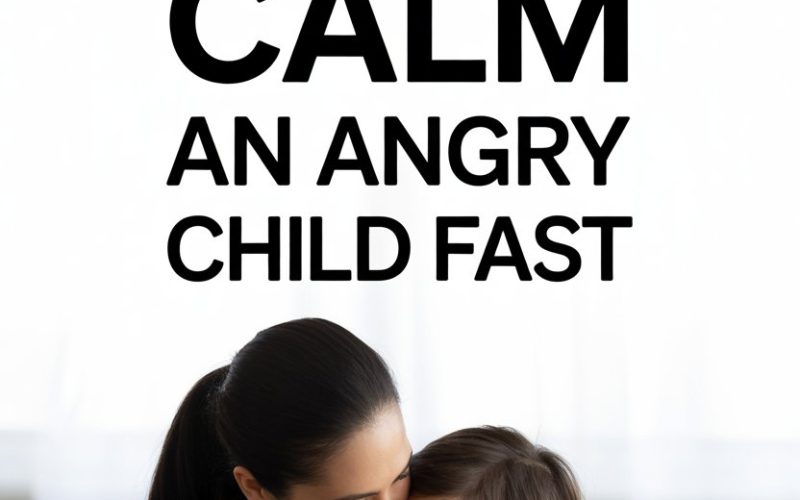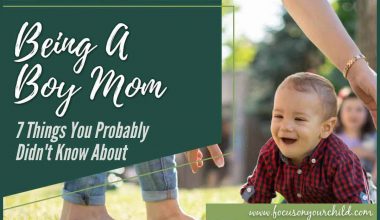Anyone who’s ever parented a small human knows the drill: one minute you’re discussing chicken nuggets, and the next, there’s a Category 5 rage storm brewing over ketchup placement.
Angry outbursts in children are as predictable as laundry piles, and nearly as stubborn. Here’s how to shrink those storm clouds and bring back the sunshine.
1. Breathe Like a Dragon
Deep breathing isn’t just for yoga class or frazzled adults. When you ask your child to take “dragon breaths”—big, slow inhales, and even bigger, louder exhales—you’re sneaking in a little mindfulness.
Researchers have found that controlled breathing helps activate the body’s calming system, lowering stress hormones. The bonus? Roaring like a dragon is much more interesting than “calm down, please.” Source
2. Name That Feeling
A raging child is often just a confused child in disguise. Labelling emotions (“You look really angry right now”) does wonders. This simple act helps kids feel understood and chips away at the intensity.
Psychologist Dr. Dan Siegel calls this the “name it to tame it” strategy—and it’s surprisingly effective, even on grown-ups after long days. Source
3. The Power of the Calm-Down Corner
Forget punishment time-outs. A soft blanket, a favourite toy, maybe some squishy stress balls—create a calm-down zone that invites, rather than repels.
When tempers flare, this becomes a safe landing pad. Over time, children associate the space with self-soothing, not shame. Source
4. Monkey See, Monkey Do
Children watch everything, right down to how you roll your eyes (they’ll master it by age eight). Model calmness by lowering your voice, unclenching your jaw, and moving slowly.
Mirroring calm acts like an emotional reset—thanks, mirror neurons.
5. Move Those Muscles
Anger is energy with nowhere to go. Suggest a quick burst of jumping jacks, a race down the hall, or even a wild, silly dance.
Research supports the mood-boosting magic of physical movement, and it’s hard to stay furious while flapping your arms like a chicken. Source
6. Offer a Drink of Water
No, water isn’t a magic potion—but it does reset the moment. Sipping cool water disrupts the anger spiral and gives the child’s brain a chance to refocus. Plus, science says dehydration can make irritability worse.
Sometimes a quick “Let’s have some water together” is enough to change the trajectory.
7. The Art of Distraction
Pull out a joke. Suggest a game. Ask if they want to help feed the cat.
Distraction isn’t about minimising your child’s feelings—it’s about giving their brain a break from the emotional loop. Bonus points for silly voices or unexpected questions (“Do you think dinosaurs ever got grumpy?”).
8. Scent-sational Calm
Certain smells can dial down the stress response. Lavender sachets or a dab of chamomile lotion on the wrist can shift a child’s mood in the right direction.
No need to overdo it; even sniffing a favourite pillow or cuddly toy can provide comfort.
9. The Five Senses Game
Grounding techniques are a favourite among child psychologists. Have your child name five things they can see, four they can touch, three they can hear, two they can smell, and one they can taste.
Tuning into the senses brings their mind back from the brink.
10. Turn Down the Volume
During a meltdown, noise and chaos add fuel to the fire. Dim the lights, lower the TV, and speak softly.
Reducing sensory overload can help a child regain control. Think sanctuary, not circus.
11. Rewind With a Story
Invite your child to tell the story of what made them so mad—either out loud or through drawing. This helps them process what happened and puts you in the role of attentive audience, not judge or jury.
For younger kids, drawing angry feelings as monsters to be tamed can be a game-changer.
12. The Magic of a Hug
Physical touch, when welcomed, works wonders. A gentle arm around the shoulder or a lap cuddle releases oxytocin, which is the brain’s way of saying, “You’re safe.”
If your child is more of a porcupine than a puppy during anger episodes, a weighted blanket or soft pillow can provide similar comfort. Source
13. Choice Power
Anger often stems from feeling powerless. Offer two acceptable choices (“Do you want to stomp your feet or squeeze your stress ball?”).
Suddenly, your child’s got a say in how to handle their big feelings, and choice puts some control back in their hands.
14. Use Visual Aids
Visual schedules, emotion charts, or a simple feelings thermometer help children “see” what’s going on inside. When kids can point to “Mad” or “Super Mad” on a colour chart, it’s easier to start talking about what might help them move back to yellow or green. Source
15. Sometimes, Silence Wins
Every parent’s instinct is to fix, explain, and rationalise. Yet sometimes the best thing to do is just be present. Sit quietly, keep company, and wait.
Your calm presence is a powerful anchor. You might be surprised how quickly the anger ebbs when you provide a safe harbour instead of a life lesson.
When Calm Returns
No one expects you to have the patience of a saint or the soothing skills of a professional mediator. Angry outbursts are part of growing up—and, let’s admit it, part of parenting, too.
The real magic lies in trying out small tweaks, again and again, until you find what works for your family.
Next time the storm clouds gather, reach for one of these 15 strategies. You might not always prevent the thunder, but you’ll be ready with an umbrella—and maybe even a cheeky grin.





